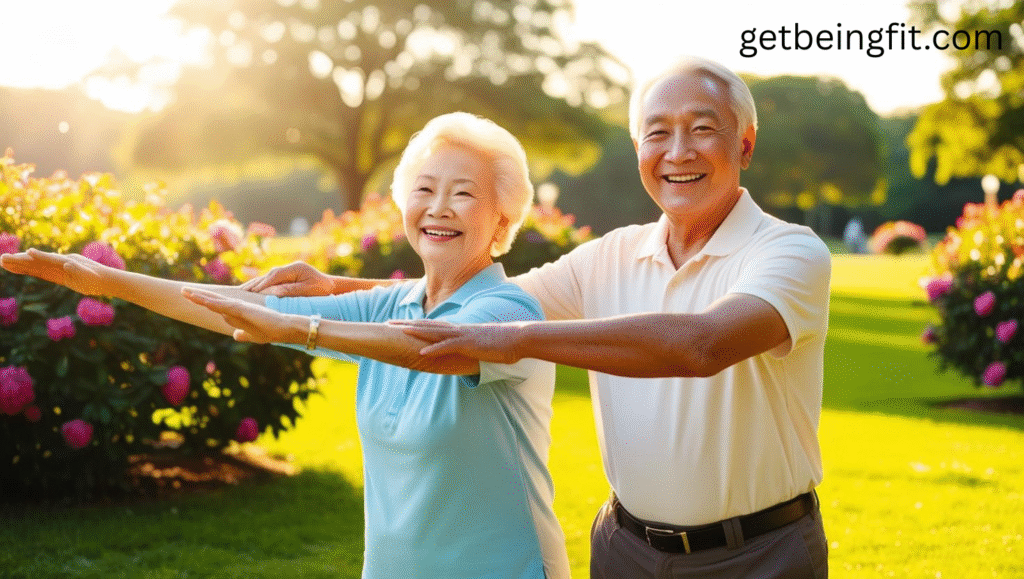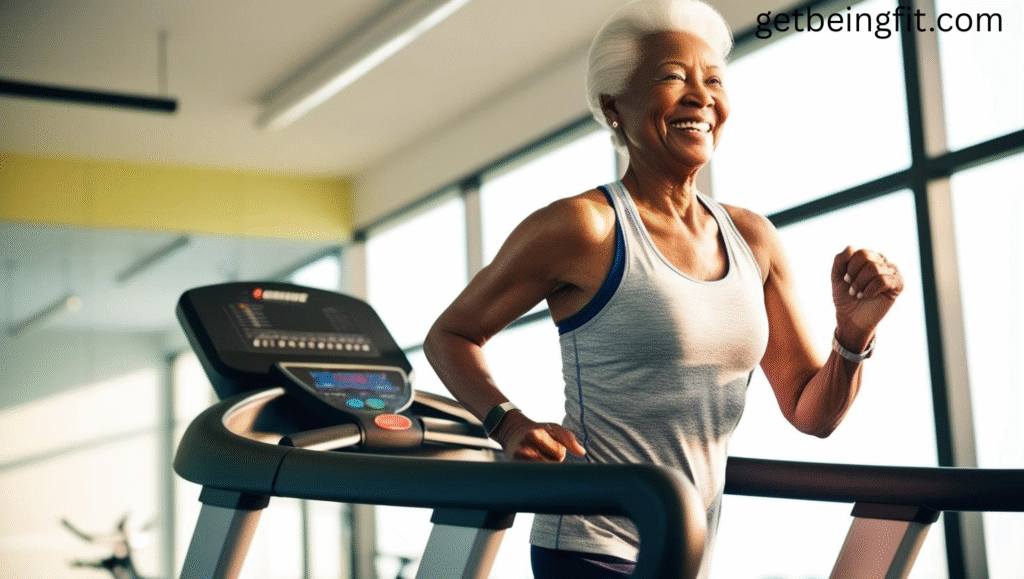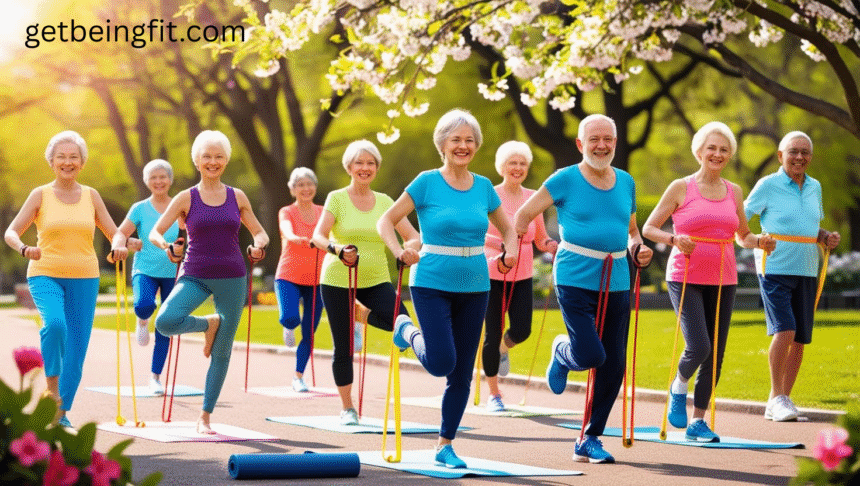Discover the safest, low-impact exercises for seniors over 60. Enhance mobility, strength, and mental health with our detailed guide featuring weekly routines, expert FAQs, and motivational tips.
Introduction
Life doesn’t slow down after 60, and neither should you! Staying active is key to thriving with stronger muscles, sharper minds, and better health. Yet, exercising doesn’t need to be overwhelming. Low-impact workouts are gentle on the joints and pack a powerful punch for your heart, muscles, and independence. In this ultimate guide, you’ll find tailored tips, the best low-impact workouts, and expert-backed solutions to stay fit while having fun.

Why Choose Low-Impact Workouts?
Low-impact exercises are a game-changer for seniors. Why? They let you reap fitness benefits without overstressing your body.
Here’s how they help:
- Prevent Injuries: Gentle movements are ideal for arthritis and osteoporosis management.
- Boost Heart Health: Strengthen your heart without overexertion.
- Lift Your Mood: Release feel-good endorphins and reduce stress levels.
- Improve Independence: Enhance your balance and coordination for everyday activities.
Pro Tip: Before starting, have a chat with your doctor, especially if chronic conditions like diabetes or heart issues are part of your life.

Key Pre-Workout Tips
Safety comes first—here’s a quick checklist:
- Comfort is Key: Invest in proper footwear and cushioned mats.
- Stretch it Out: Always warm up for 5–10 minutes before starting.
- Stay Hydrated: Keep water handy to sip throughout.
- Start Small: Begin with short sessions and gradually extend the time.
Low-Impact Exercises for Seniors
1. Warm-Up Moves
- Seated Marching: A seated version of jogging to improve circulation.
- Arm Circles: Gently rotate your arms to loosen stiff shoulders.
2. Cardio Boosters
- Walking 30 minutes daily can uplift your mood and heart.
- Water Aerobics: A perfect mix of fun and fitness for achy joints.
- Stationary Cycling: Strengthen your legs while sitting comfortably.
3. Strength Training
- Chair-Assisted Squats: Build muscle without strain.
- Resistance Bands: Tone arms and legs effectively.
4. Balance & Flexibility Enhancers
- Tai Chi: Flowing movements enhance your coordination and reduce falls.
- Chair Yoga: Adaptable stretches for all levels of mobility.
5. Cool-Down Essentials
- Neck Rolls: Ease tension from daily activities.
- Hamstring Stretches: Feel the stretch while seated—no pressure on knees.
Sample Weekly Routine
| Day | Activities | Duration |
|---|---|---|
| Monday | Walking + Stretching | 30 mins |
| Wednesday | Water Aerobics + Resistance Bands | 40 mins |
| Friday | Tai Chi + Chair Yoga | 35 mins |

Staying Motivated
- Buddy Up: Join a group class or walk with friends.
- Track Your Journey: Use apps or jot down your achievements.
- Celebrate Success: Small victories keep you moving forward.
Conclusion
Let age be your springboard, not your obstacle! A well-structured, low-impact exercise plan will enhance your strength, peace of mind, and self-reliance. Remember, starting small and staying consistent paves the way for lasting benefits. Every stretch, step, or squat counts toward a healthier you.

Q1: Is exercise safe for seniors managing arthritis?
Absolutely! Low-impact options like chair yoga or water aerobics can alleviate stiffness.
Q2: How often should I work out weekly?
Aim for at least 2½ hours of light to moderate activity spread throughout the week.
Q3: What if I have mobility issues?
Not a problem! Chair-based exercises or resistance bands are perfect solutions.
Q4: What’s a must-have for starting?
Comfortable shoes, a supportive chair, and a positive mindset go a long way.
Q5: How do I stay entertained?
Mix things up—dancing, gardening, or fitness games keep boredom at bay.
- Q6: What are good exercises for seniors with back pain?
- Gentle stretching exercises like cat-cow stretches or water aerobics can ease tension in the back. Always start slow and avoid any movements that cause discomfort.
- Q7: Can seniors exercise at home without equipment?
- Absolutely! Bodyweight exercises like seated marching, wall push-ups, and chair-assisted squats require no equipment and are highly effective.
- Q8: How can I stay safe while exercising alone?
- Keep a phone nearby in case of emergencies, choose well-lit areas, and inform someone of your activity schedule. Avoid overexertion.
- Q9: Are group classes beneficial for seniors?
- Yes, they provide a supportive environment, encourage social interaction, and add structure to fitness routines. Plus, they’re a lot more fun!
- Q10: How do I handle days when I feel too tired to exercise?
- It’s okay to rest, but opt for light activities like stretching or a short walk to keep the momentum going. Listen to your body and don’t force it.
- Q11: What should seniors eat before and after workouts?
- Before exercising, a light snack like a banana or yogurt provides energy. Afterward, focus on protein-rich foods like eggs or nuts to aid muscle recovery.
- Q12: Can seniors benefit from meditation alongside fitness?
- Absolutely! Meditation reduces stress, improves mental clarity, and complements physical activity by promoting overall wellness.
- Q13: Are outdoor exercises better than indoor workouts?
- Outdoor workouts like walking in nature boost mood and provide fresh air. However, indoor options are excellent for maintaining fitness during extreme weather.
- Q14: What time of day is best for senior workouts?
- Mornings are ideal as the body feels refreshed, and it boosts energy for the rest of the day. However, anytime that fits their schedule is fine.
“Incorporate resistance bands, as suggested by the CDC’s muscle-strengthening guidelines, to maintain functional


